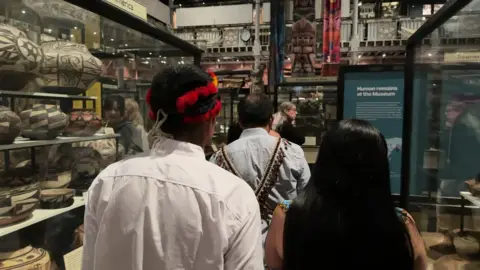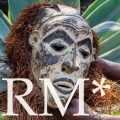The collection of human remains, also known as tsantsas, at the Pitt Rivers Museum in Oxford predominantly came from the Ecuadorian Shuar people, and were acquired between 1884 and 1936.
In 2020, the tsantsas were removed from public display as part of what the museum called a “decolonisation process”, following complaints from Shuar leaders.
During a visit to Oxford this week, Shuar members repeated their calls for greater understanding of the artefacts and for them to be repatriated to Ecuador.

Jefferson Pullaguari had joined the delegation in Oxford to “visit his ancestors and to be very happy to see how they’ve been taken care of after all this time”.
He said it was “very important to be able to preserve history, to preserve these types of remains and eventually to be able to have that dream of having them return beck home”.
The shrunken heads were formed from human, sloth or monkey heads and were sought-after items by collectors during the 19th and 20th Centuries.
They were not “war trophies” but were in fact made to capture the power of one of the multiple souls that Shuar and Achuar people believed their men had.


